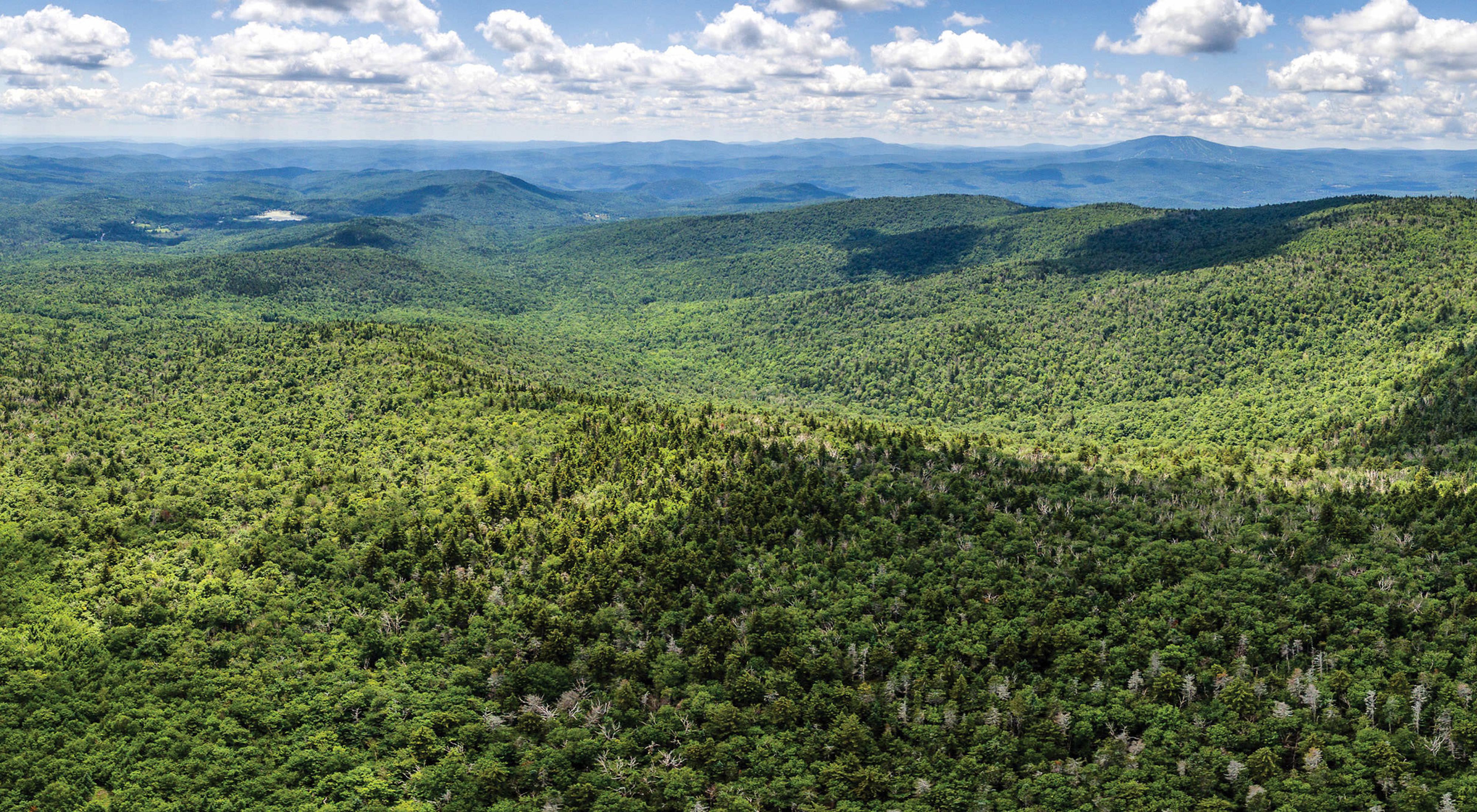The Nature Conservancy’s 3,500-Acre Glebe Mountain Will Be Transferred to the Silvio O. Conte National Fish and Wildlife Refuge
A capstone project of Senator Leahy’s 50-year conservation legacy
Media Contacts
-
Eve Frankel
Director of Strategic Communications
TNC VT
Phone: 802.595.5000
Email: eve.frankel@tnc.org
The Nature Conservancy (TNC) is proud to announce that its 3,500-acre Glebe Mountain Natural Area will be added to the Silvio O. Conte National Fish and Wildlife Refuge, creating the new West River Management Unit for the U.S. Fish & Wildlife Service (USFWS).
Earlier this year, Senator Patrick Leahy secured an $8.5 million federal appropriation for public lands projects in Vermont and was instrumental in securing more than $17 million for new acquisitions within the four-state Conte geography. These funds make this project possible and will work to safeguard forests, waters and wildlife habitat with benefits for both natural and human communities.
Senator Leahy, who as chairman of the Senate Appropriations Committee worked to fund Silvio O. Conte Refuge land acquisitions, said, “I have worked for many years on the conservation of ecologically diverse public lands in Vermont and across the United States for use by current and all future generations. The decision by U.S. Fish and Wildlife to add Glebe Mountain to the Conte refuge means it, too, will be open for public use by birders, hunters, hikers and others while protecting a diverse ecosystem and preventing forest fragmentation.”
The 3,500-acre forested expanse spans the towns of Londonderry and Windham and had been a privately owned hunting preserve, as well as the proposed site of a 27-turbine wind farm. In 2019, The Nature Conservancy successfully conserved the land after it was put up for sale on the open market. Under The Nature Conservancy’s ownership, the property became protected from all development, public access was expanded and the organization worked to restore and enhance its forests and waters.
“Vermont and the planet are facing the twin crises of accelerating biodiversity loss and climate change," said Heather Furman, TNC’s Vermont state director. “This project, which comes on the 25th anniversary of the Silvio O. Conte Refuge, is truly a success story for both nature and people. We are grateful to Senator Patrick Leahy for his foresight and leadership and his decades-long commitment to conservation. Glebe Mountain and the USFWS West River Management Unit within the Conte will be a benefit to our communities and for our wildlife for generations to come.”
Windham and Londonderry residents have played an important role in the long-term protection of this special landscape by acting to protect its ridgeline against development and supporting the property’s conservation by The Nature Conservancy in 2019. The Nature Conservancy will continue to engage with the communities regarding the ownership and management transition of the natural area while also elevating any opportunities that the two towns can realize from hosting a federal wildlife refuge within their borders.
The Silvio O. Conte National Fish and Wildlife Refuge was established in 1997 to conserve, protect and enhance the abundance and diversity of native plant, fish and wildlife species and the ecosystems on which they depend throughout the Connecticut River watershed. The refuge is comprised of nearly 40,000 acres within four New England states: New Hampshire, Vermont, Massachusetts and Connecticut.
The Glebe Mountain area is a high-priority habitat for wildlife, especially black bear, as well as important species like the wood thrush, Blackburnian warblers and Louisiana waterthrush. In response to climate change, many species are shifting their ranges 36 feet in elevation and 11 miles north each decade, and large blocks of habitat are critical to their survival.
The Nature Conservancy’s decision to invest in the Conte refuge via its transfer of the 3,500-acre Glebe Mountain parcel reflects its shared goals with the USFWS for biodiversity protection and prioritizing public access. The U.S. Fish and Wildlife Service is the only federal agency whose primary responsibility is the conservation and management of fish, wildlife, plants and their habitats for the continuing benefit of the American people.
“The addition of the Glebe Mountain property to the Silvio O. Conte National Fish and Wildlife Refuge will establish the West River Division for the benefit of wildlife and people,” said Andrew French, U.S. Fish and Wildlife refuge manager. “Under U.S. Fish and Wildlife Service stewardship, the property will be made more accessible for expanded and compatible public access and uses. As a new member of the community, it will continue to be our goal to be viewed as an asset by our neighbors and visitors to this beautiful and ecologically important part of Vermont. We look forward to collaborating with residents, local leadership, state and federal agencies, and others who share an interest in this very special part of the Connecticut River watershed.”
The Nature Conservancy has a long history of conserving land and transferring the properties to state and federal management. Twenty-three percent of all Vermont state lands were initially acquired by The Nature Conservancy. Glebe Mountain will join the ranks of iconic Vermont landmarks like Green River Reservoir, Camel’s Hump and Jamaica State Park, all of which were first conserved by The Nature Conservancy.
The Nature Conservancy is a global conservation organization dedicated to conserving the lands and waters on which all life depends. Guided by science, we create innovative, on-the-ground solutions to our world’s toughest challenges so that nature and people can thrive together. We are tackling climate change, conserving lands, waters and oceans at an unprecedented scale, providing food and water sustainably and helping make cities more sustainable. The Nature Conservancy is working to make a lasting difference around the world in 77 countries and territories (41 by direct conservation impact and 36 through partners) through a collaborative approach that engages local communities, governments, the private sector, and other partners. To learn more, visit nature.org or follow @nature_press on X.
